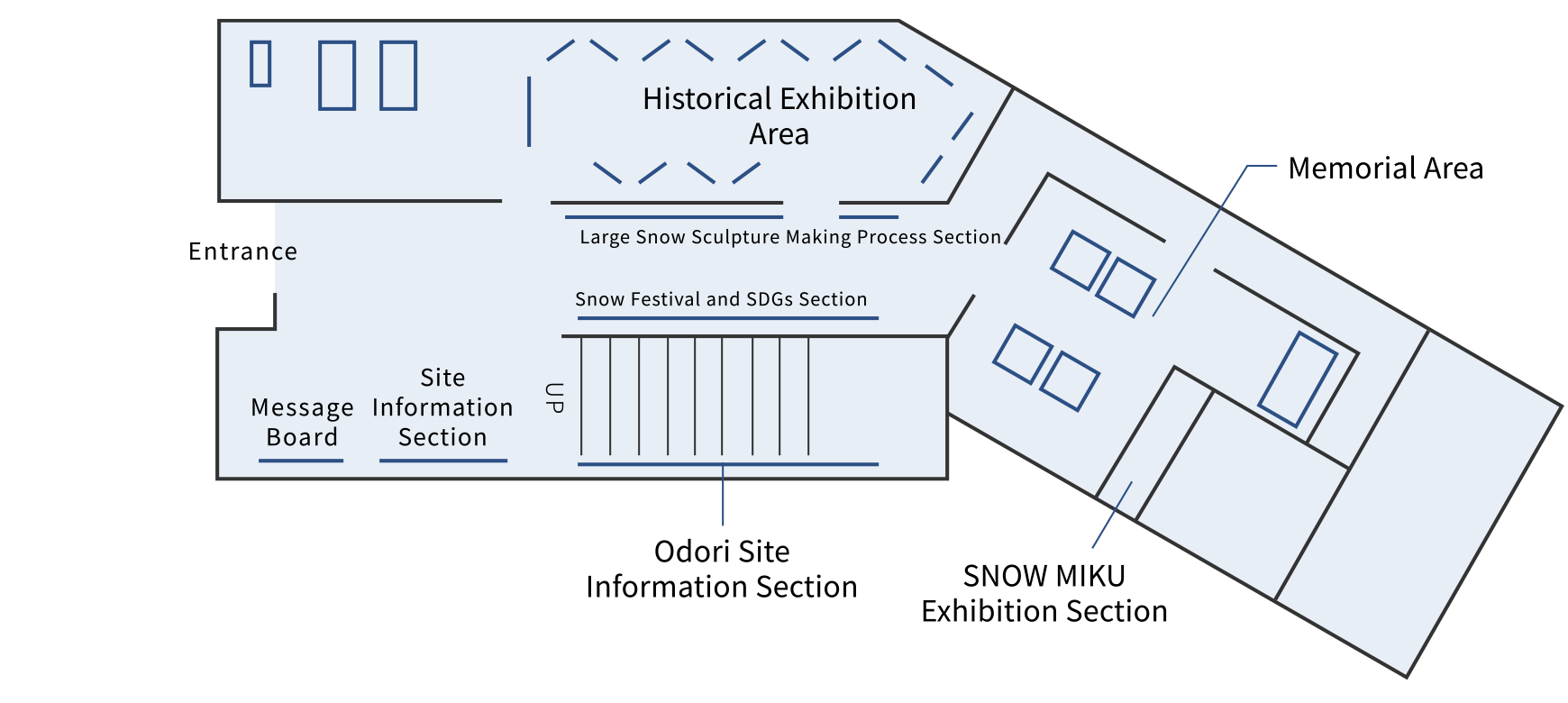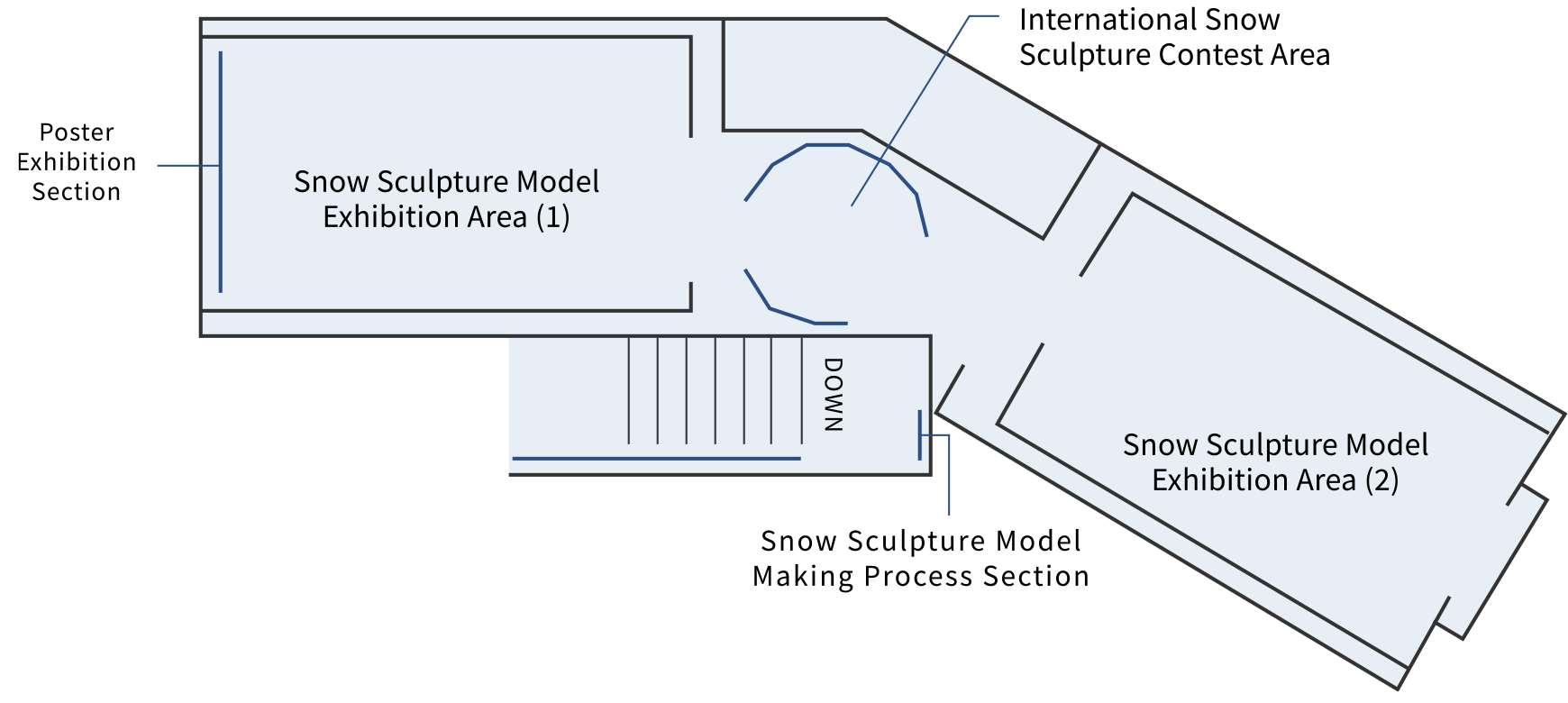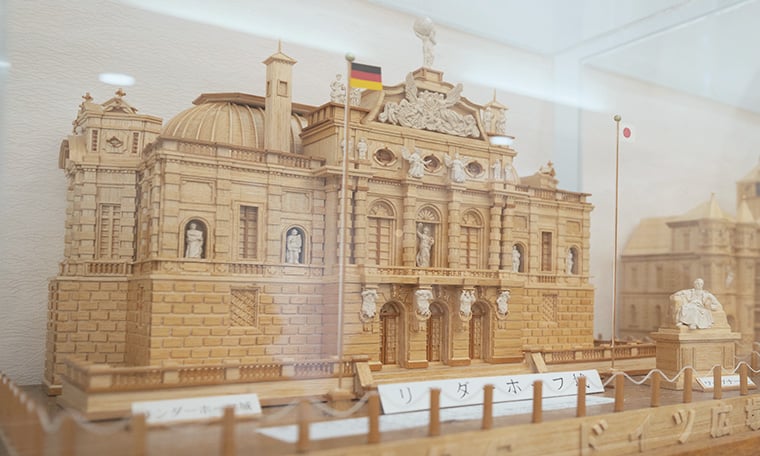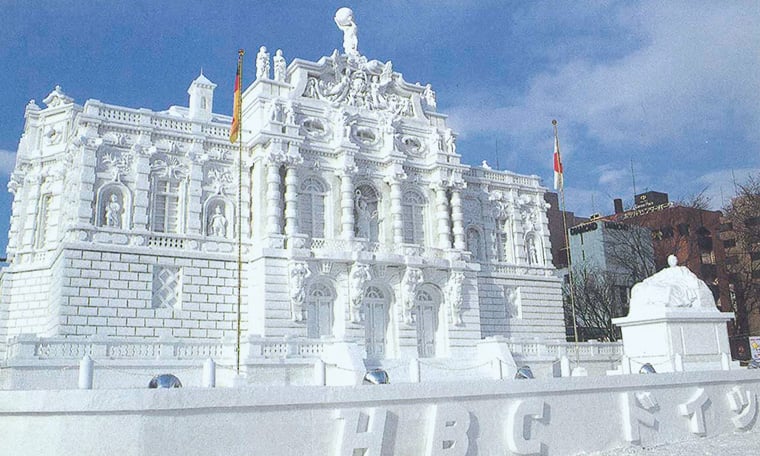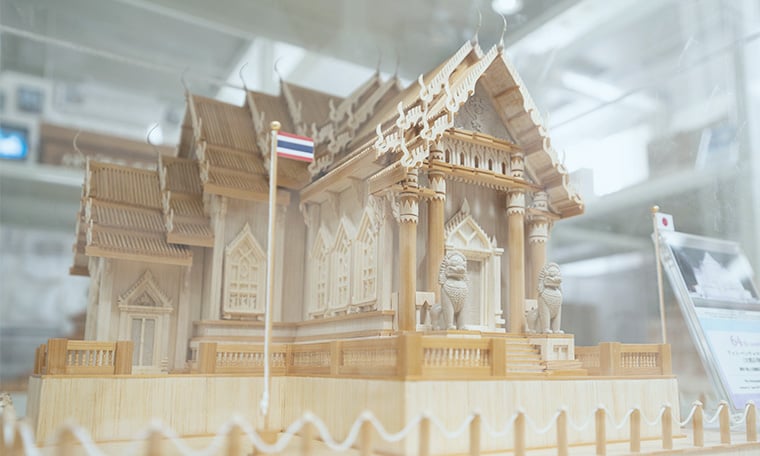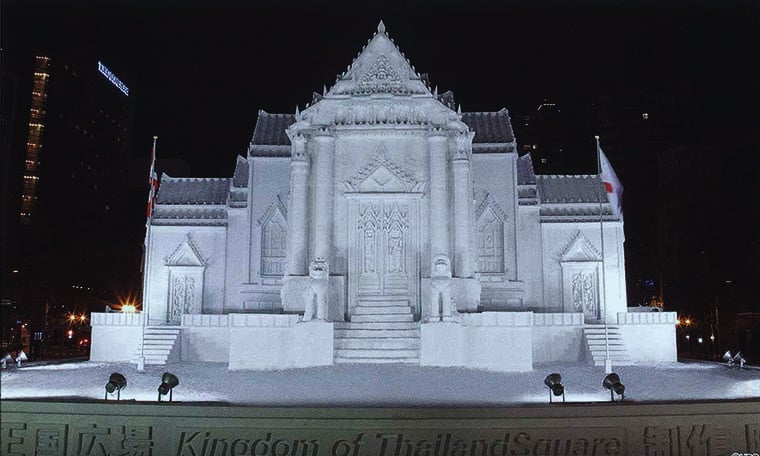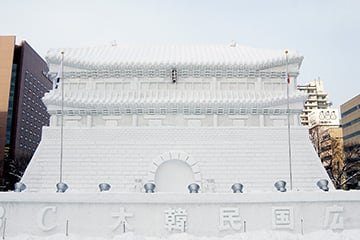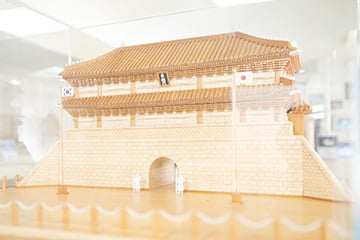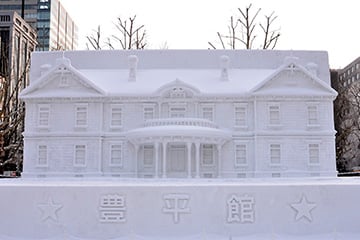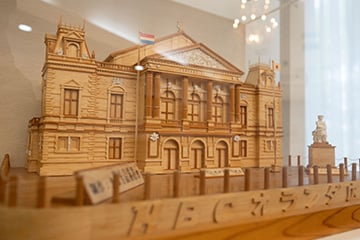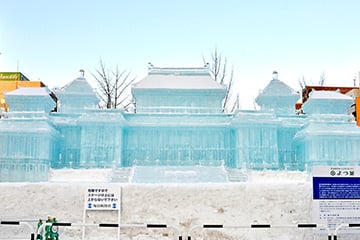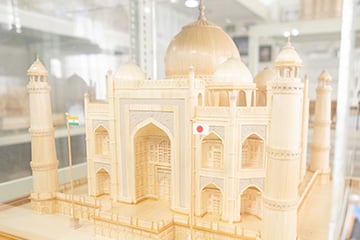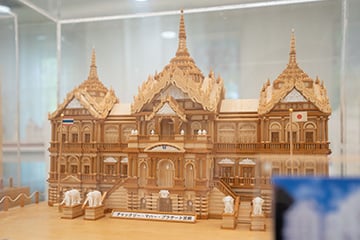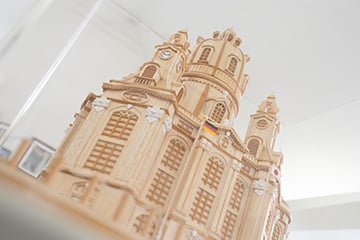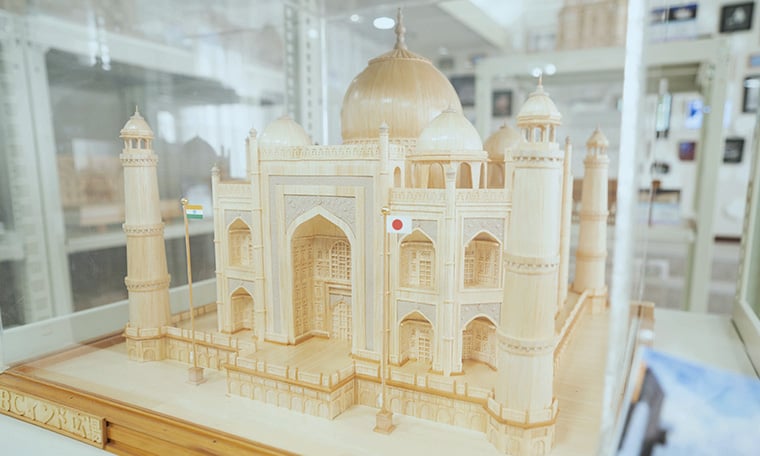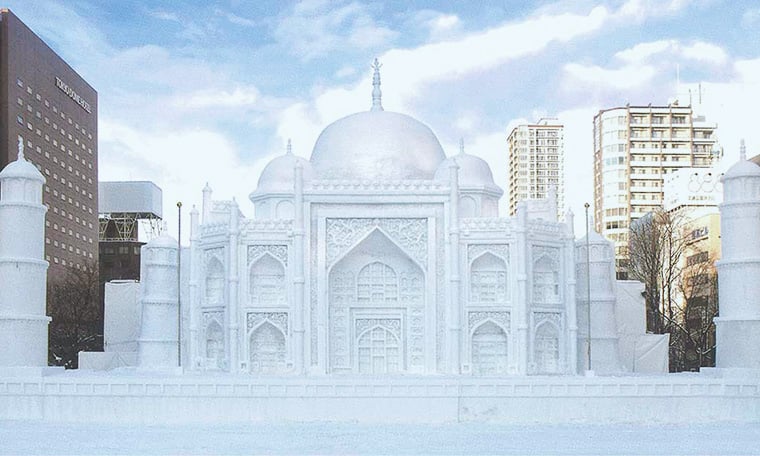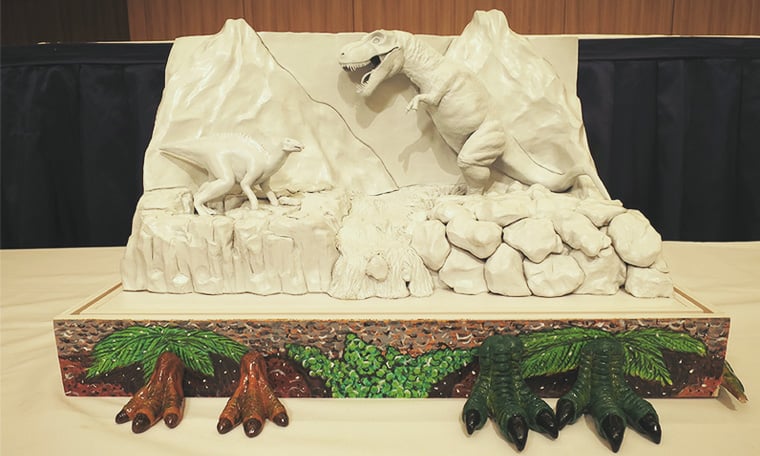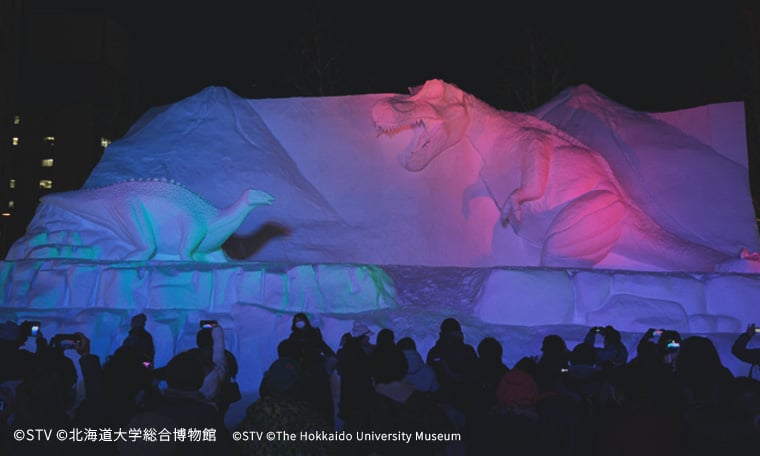

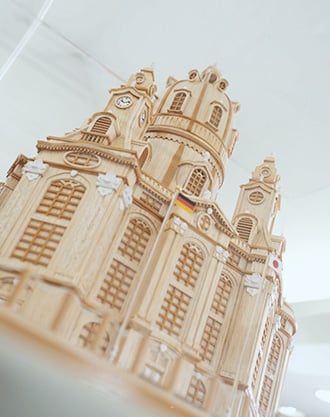
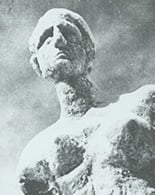
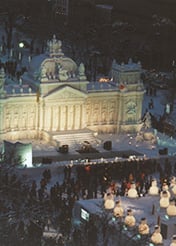
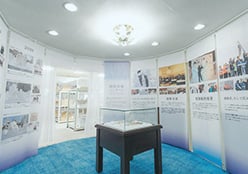
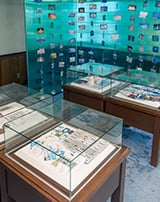
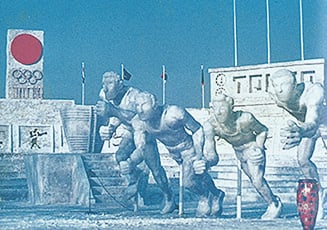
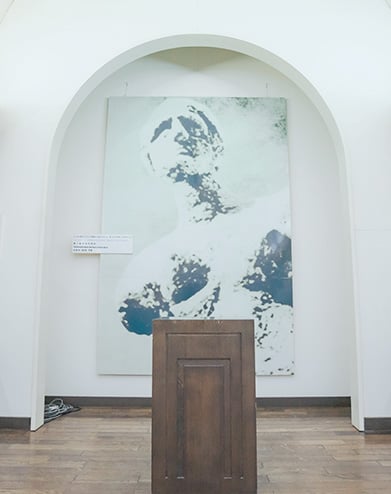
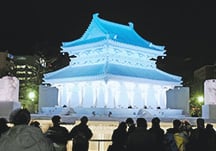
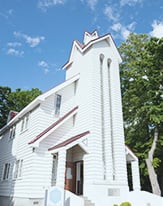
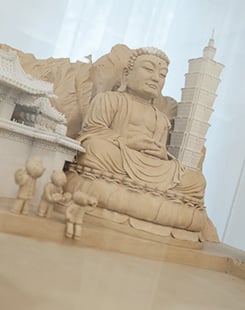
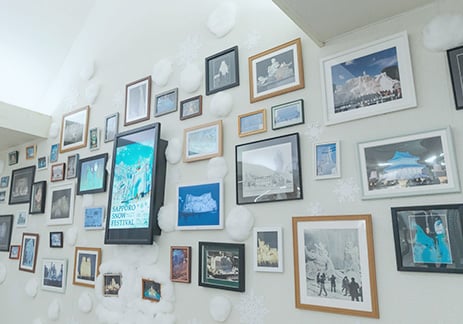
Memories of
a beautiful winter wonderland
that transcend time
The Sapporo Snow Festival Museum was opened to pass on to future
generations the valuable materials of the Sapporo Snow Festival,
which began in 1950.
Through historical exhibits from the first festival to the
present, as well as posters,
snow sculpture models and other memorabilia from the past,
visitors can enjoy one of the most popular events in Sapporo,
which has delighted many people for a long time, at any time of
the year.
- Hours
-
- Spring:
- April-May
- 9:00-17:00
- Summer:
- June-September
- 9:00-18:00
- Autumn/Winter:
- October-March
- 9:00-17:00
- Fees
-
Free of charge
-
*The museum is located on the grounds of the
Sapporo Hitsujigaoka Observation Hill.
Please click here for admission fees to the Sapporo Hitsujigaoka Observation Hill.
-
*The museum is located on the grounds of the
Sapporo Hitsujigaoka Observation Hill.
How to enjoy the Sapporo Snow Festival Museum

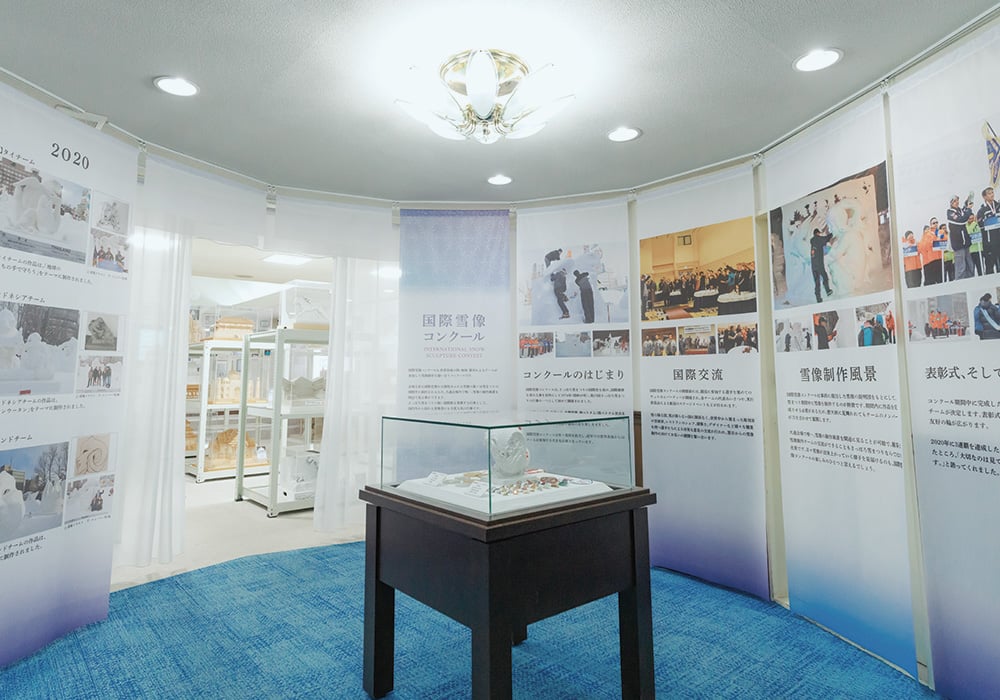
Enjoy the Snow Festival any time of year
The Sapporo Snow Festival can only be enjoyed for eight days during the year. The Sapporo Snow Festival Museum is a place where visitors can experience the charm of the festival at any time of the year.
Step into the building with its adorable chapel-like exterior and you will find a world of snow and ice decorated with coordinated lace materials and glass bricks, reminiscent of the actual Snow Festival. You can experience the Snow Festival at any time of the year through a variety of exhibits, including information on how to make snow sculptures.
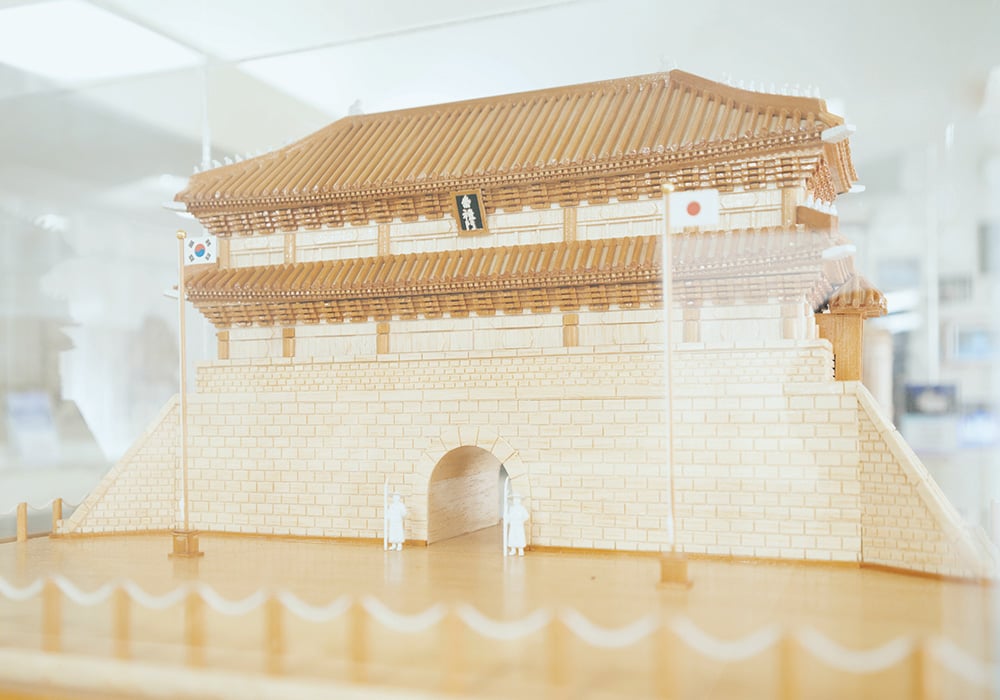
The origin of the overwhelmingly powerful large snow sculptures lies in their elaborate models
The large snow sculptures are synonymous with the Snow Festival. It is not widely known that elaborate models are made during the design stage. The museum displays many of these snow sculpture models from the 1980s to the most recent. When viewed together with photos of the completed snow sculptures, you can see how meticulously they were designed and built. Be sure to take a closer look at the details of the snow sculptures.
You can also relive your visit to the Snow Festival by looking at the models of the years you visited the festival, or look for the model of the year you were born. Experience the history of the Snow Festival on a more profound level.
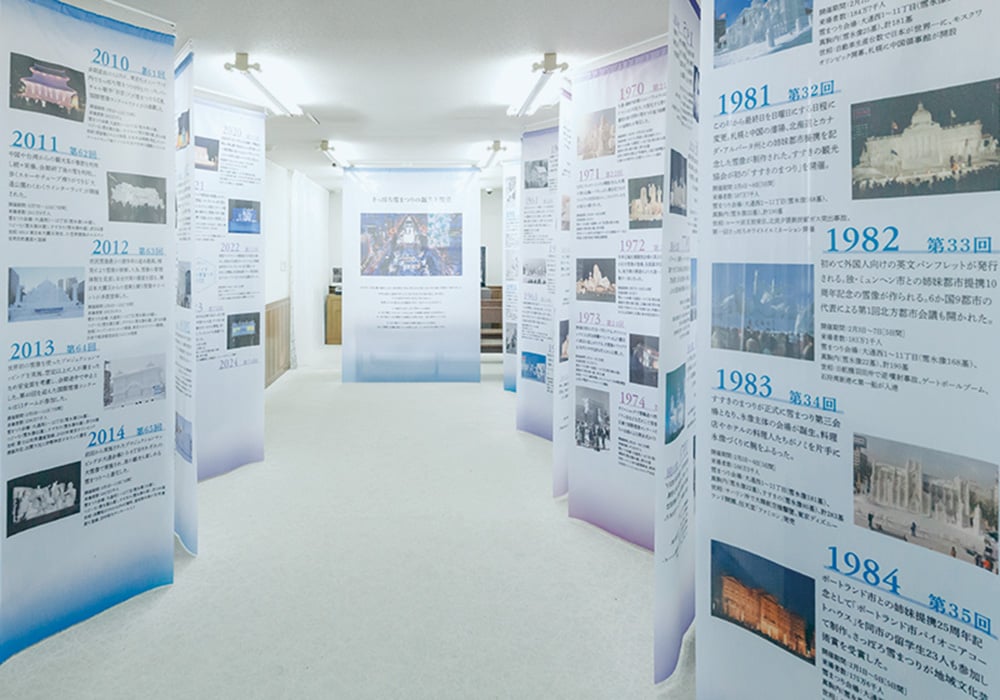
Intermingling of your memories and the Snow Festival
The motifs of the large snow sculptures are often based on important events such as the Olympics and the World Cup, as well as popular movies and video games that reflect current trends in the world. Another attraction of the Snow Festival is that visitors can experience the latest technology, such as projection mapping, up close and personal.
Looking back on the history of Japan and the world as well as tracing the footsteps of the Snow Festival that has continued for more than 70 years is another way to enjoy the Sapporo Snow Festival Museum. Couples, parents and children, and friends are invited to enjoy the festival together while reminiscing about their own memories of the past.
Exhibitions

 Snow Sculpture Model Exhibition Area (1): 31st (1980) – 59th
(2008) Sapporo Snow Festival
Snow Sculpture Model Exhibition Area (1): 31st (1980) – 59th
(2008) Sapporo Snow Festival
Visitors can see more than 70 snow sculpture models of the past, which are indispensable in the production process of the snow sculpture. The elaborate models are made of various materials such as clay and wood. The size is approximately 1/40 of the actual snow sculpture. Imagine that the finely crafted fingertip-sized parts of a large snow sculpture are larger than a full-grown person, and you will understand the difficulty of making a snow sculpture.
46th (1995)
Linderhof Palace
Produced by : Japan Self Defense Force
- リンダーホーフ城
- 制作:陸上自衛隊
64th (2013)
Wat Benchamabophit (Marble Temple)
Produced by : Japan Self Defense Force Northern Army Signal Group
- ワット・ベンチャマボピット(大理石寺院)
- 制作:陸上自衛隊北部方面通信群
 Snow Sculpture Model Exhibition Area (2): 60th (2009) – 73th
(2023) Sapporo Snow Festival
Snow Sculpture Model Exhibition Area (2): 60th (2009) – 73th
(2023) Sapporo Snow Festival
63rd (2012)
TAJ MAHAL
Produced by : Japan Self Defense Force Northern Army Signal Group
- タージ・マハル
- 制作:陸上自衛隊北部方面通信群
73rd (2023)
Hokkaido in the Cretaceous Period ~ Tyrannosaurus & Kamuysaurus ~
Produced by : Sapporo Snow Festival Large Sculpture Committee Sculpture Subcommittee 3 (Specified Nonprofit Corporation Hokkaido Association for Development of Area Culture)
-
白亜紀の北海道
~ティラノサウルス&カムイサウルス~ - 制作:さっぽろ雪まつり大雪像制作委員会 第3雪像制作部会(NPO法人北海道の地域文化を守る会)
 Historical Exhibition Area
Historical Exhibition Area
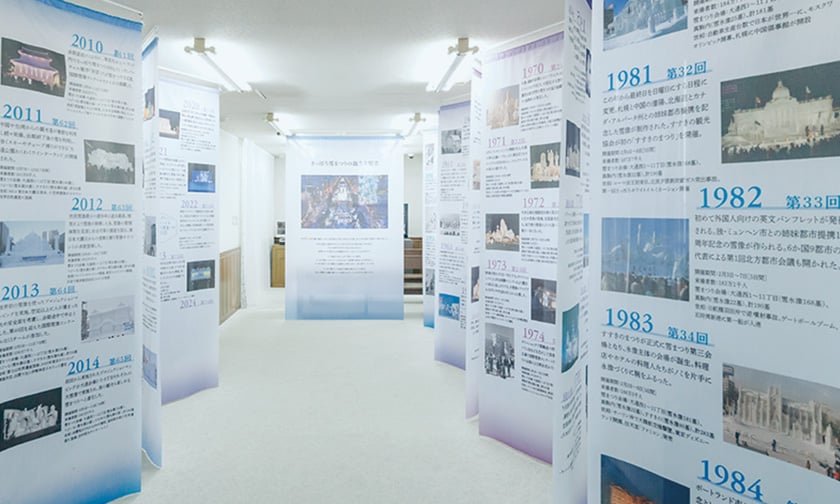
This is an exhibition area that allows visitors to look back on the history of the festival since the first one in 1950, along with what was happening at that time. There are stories which are not well known now such as Taro Okamoto taking part in the Snow Festival and a wedding ceremony in the snow.
 Odori Site Information Section
Odori Site Information Section
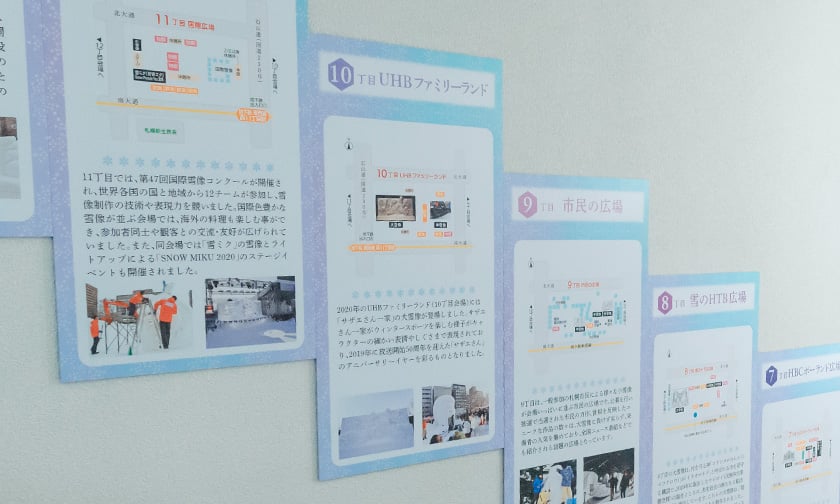
The Odori Site is a 1.1 km long site stretching from Nishi 1-chome to Nishi 12-chome in Odori Park, running from east to west. Snow sculptures and booths that provide a wide range of enjoyment can be viewed at each site. Visitors can experience the scale of one of Sapporo's most popular winter events.
 Memorial Area
Memorial Area
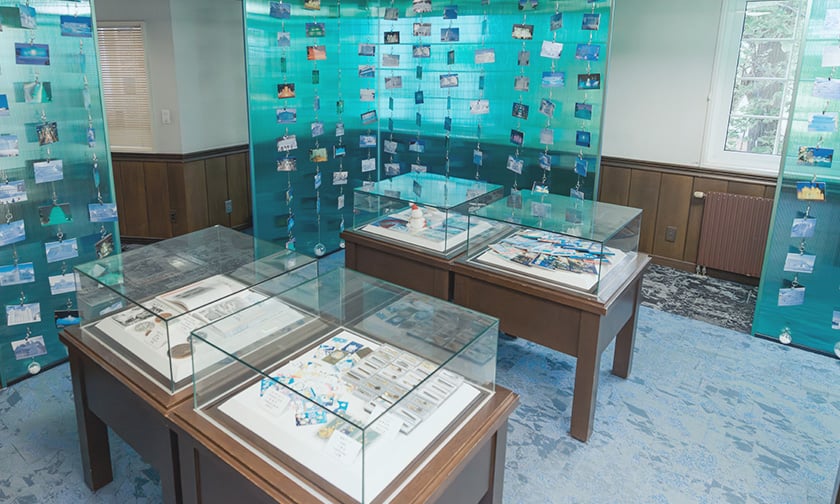
This area displays postcards, pin badges, and other official commemorative items popular as souvenirs from past festivals. Visitors can also admire old-fashioned telephone cards and other valuable items that bring back memories of the good old days.
 SNOW MIKU Exhibition Section
SNOW MIKU Exhibition Section
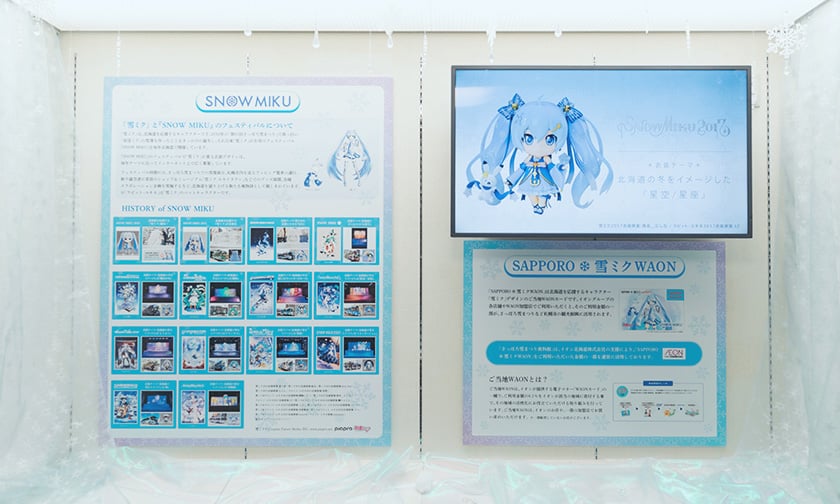
SNOW MIKU was first created in 2010 with the creation of a snow sculpture of Hatsune Miku. The exhibit includes costumes, streetcar designs, and more from the collaborations that have followed since then.
 International Snow Sculpture Contest Area
International Snow Sculpture Contest Area
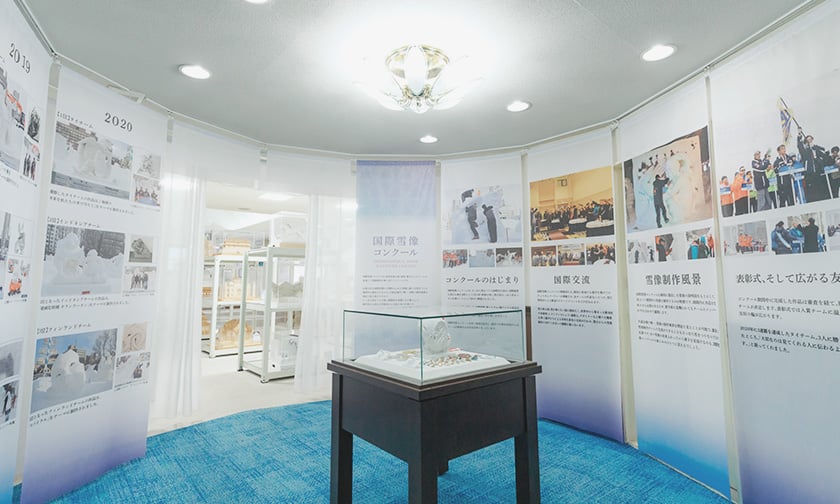
This area features past winners of the contest, in which teams from around the world compete with each other in creating snow sculptures. The contest shows that the Snow Festival is one of the world's leading events with a truly international flavor.
 Large Snow Sculpture Making Process Section
Large Snow Sculpture Making Process Section
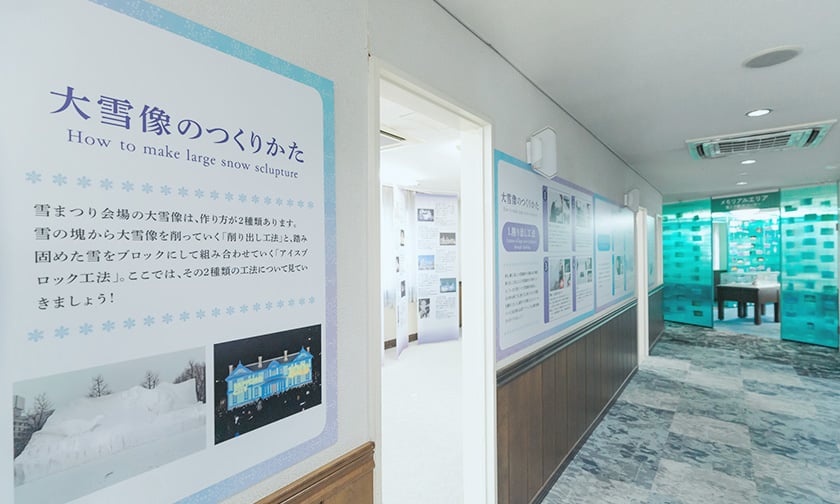
There are two major methods of making large snow sculptures that have moved the hearts of many people. This area provides a behind-the-scenes look at the making of these snow sculptures, including the differences between the two methods and how they are taken apart.
 Snow Festival and SDGs Section
Snow Festival and SDGs Section
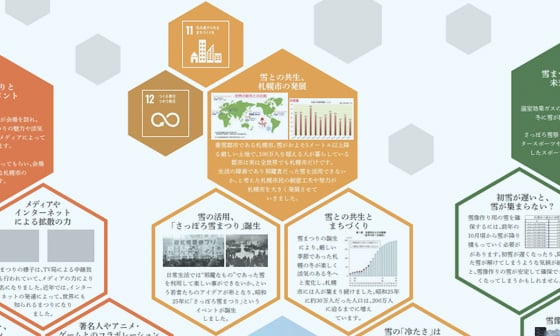
The Snow Festival supports the SDGs, which aim to realize a sustainable society. We will work together with visitors to consider what the Snow Festival can do for a beautiful and abundant global environment.
 Snow Sculpture Model Making Process Section
Snow Sculpture Model Making Process Section
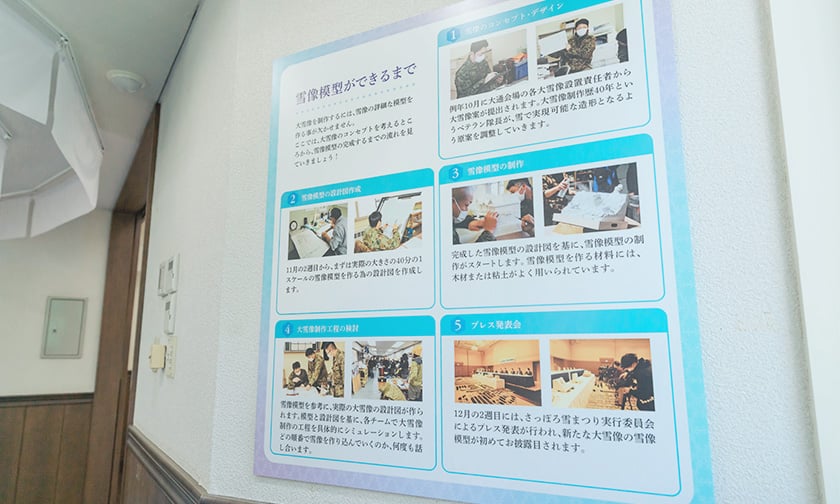
This area features the production process of snow sculpture models, from conceptualization to design. Visitors will learn how elaborate models play an important role in the production of large snow sculptures.


Visitor Comments

-
I stopped by the museum while visiting the Sapporo Hitsujigaoka Observation Hill and enjoyed it more than I thought because of the sheer size of the models.
-
I did not know that the Snow Festival has been held for over 50 years! I hope to make a snow sculpture myself someday.
-
There was a model of a large snow sculpture that I saw more than 30 years ago, and it brought back memories of that time.
-
I definitely want to go to the Snow Festival this year to see the real thing!
-
The Snow Festival and SDGs Section was informative. This would be a great place for a children's social studies field trip.
-
I live in Sapporo, but have never had a chance to visit this museum before. The history of past Snow Festivals was very interesting and I thoroughly enjoyed viewing the exhibits.


Access

- Location
-
Hitsujigaoka 1, Toyohira-ku, Sapporo, Hokkaido, 062-0045 [View on Google Maps]
TEL. 011-851-3080
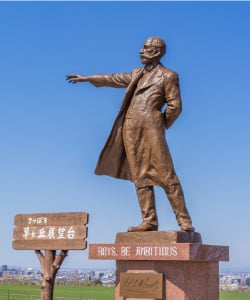
The Sapporo Snow Festival Museum is located on the grounds of the Sapporo Hitsujigaoka Observation Hill.
To get to Sapporo Hitsujigaoka Observation Hill, take the bus
bound for Hitsujigaoka Observation Deck from Fukuzumi Station on
the Toho Subway Line.
It takes about 13 minutes from Sapporo Station to Fukuzumi
Station (the last stop on the Toho Subway Line).
After getting off at Fukuzumi Station, board the bus bound for
Hitsujigaoka Observation Deck (Fuku 84/Hitsujigaoka Line) at the
Fukuzumi Station Bus Terminal, Bus Stop No. 4. It takes about 10
minutes.
For details on directions and timetables to the bus terminal, please check the Access page on the Sapporo Hitsujigaoka Observation Hill website.
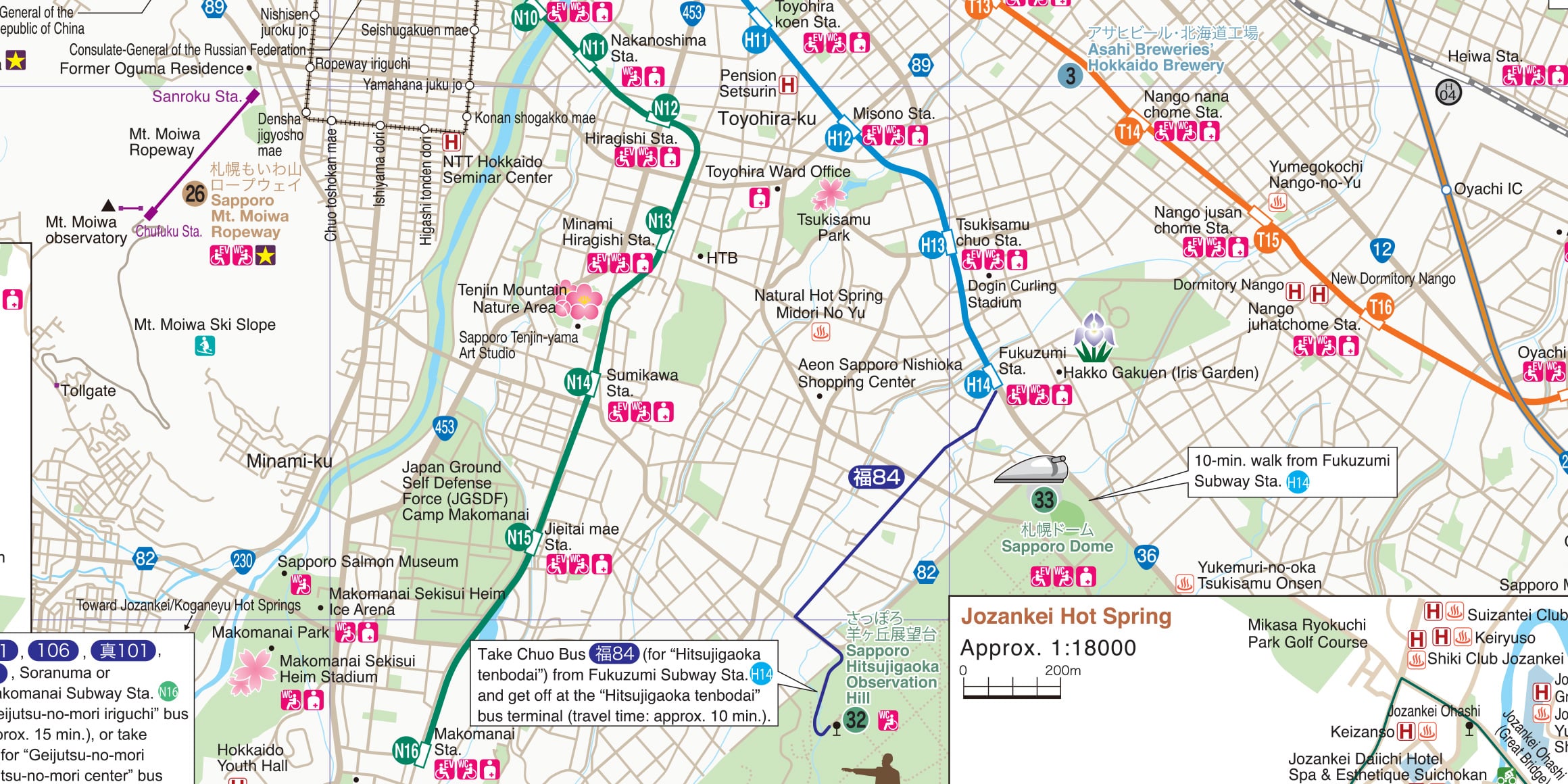
FAQ

Where is the Sapporo Snow Festival Museum?
The Sapporo Snow Festival Museum is located on the grounds of
the Sapporo Hitsujigaoka Observation Hill.
For details,
please check the
Access page.
Is there a fee? Do I need to make a reservation?
This museum is free of charge, but there is an admission fee
to the Sapporo Hitsujigaoka Observation Hill.
Please
click
here for admission fees to the Sapporo Hitsujigaoka
Observation Hill.
Can I take pictures?
Yes. Photography is allowed in the museum. Please be considerate when taking pictures so as not to inconvenience other visitors.
Is the museum open in the summer too?
Yes. The Sapporo Snow Festival Museum is open year-round.
Please note that the hours of operation vary depending on the
time of year.
Please check
here
for details.
When will the next Sapporo Snow Festival be held?
Please check the Sapporo Snow Festival official website for information on when the next Snow Festival will be held.


